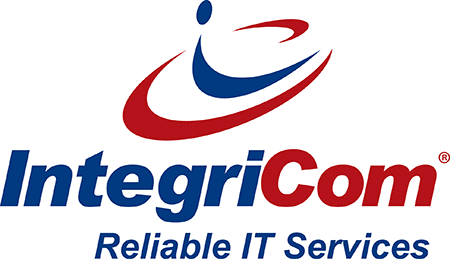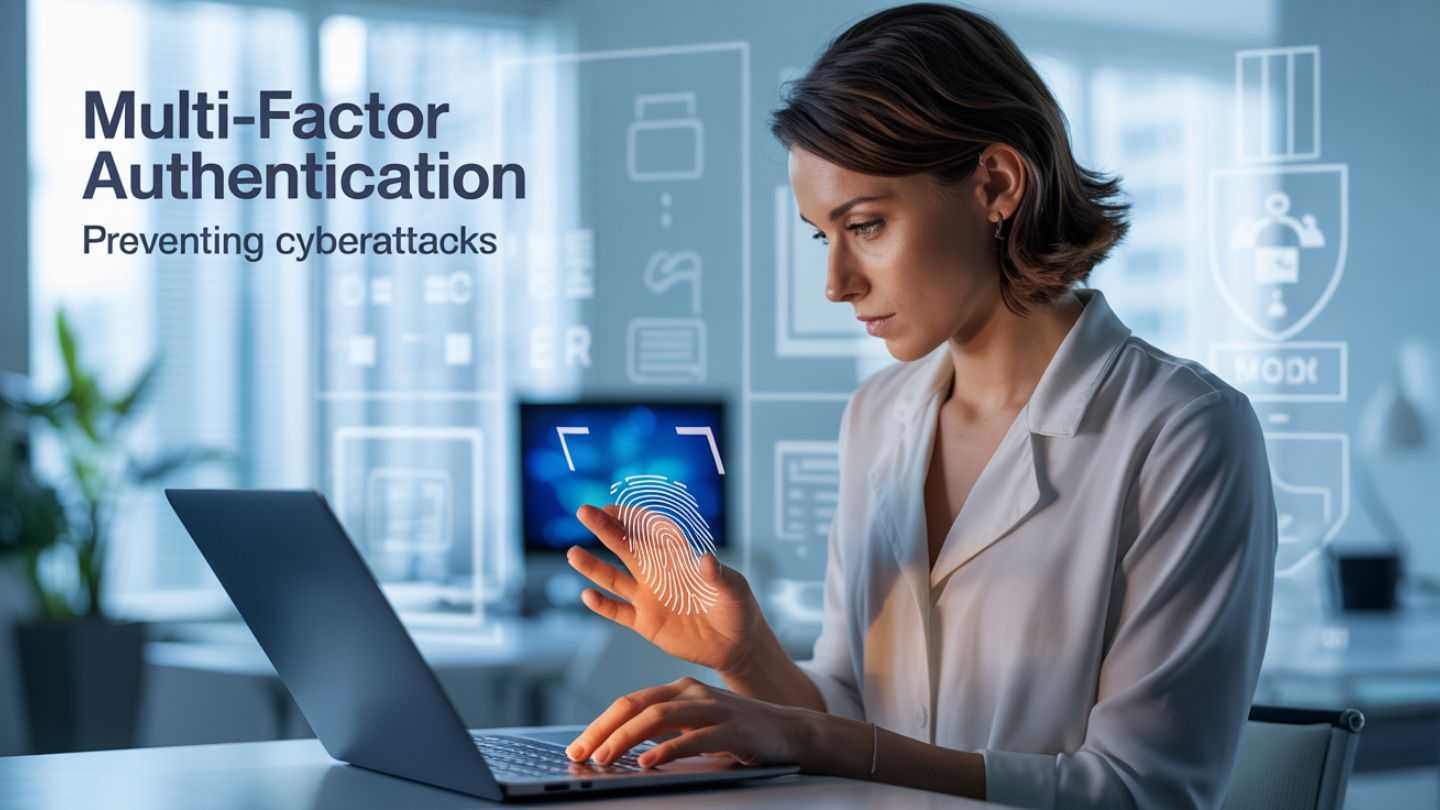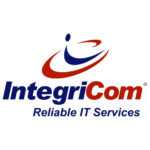In an era where cyber threats are escalating in frequency, sophistication, and impact, safeguarding digital identities has become a critical business imperative. Traditional password-based authentication methods are no longer sufficient to counteract the evolving tactics of cybercriminals. Multi-Factor Authentication (MFA) has emerged as a cornerstone of modern cybersecurity frameworks, offering a robust and layered approach to protecting sensitive data and systems.
By requiring users to validate their identity through multiple independent factors, such as passwords, physical devices, or biometrics, MFA significantly minimizes the risk of unauthorized access, even when credentials are compromised. This blog explores how MFA functions as a strategic defense mechanism against cyberattacks, examines its core components, and highlights its indispensable role in strengthening organizational resilience in today’s volatile threat landscape.
Key Takeaways
- Multi-Factor Authentication (MFA) significantly enhances security by requiring multiple forms of identity verification, which protects against unauthorized access even if one factor is compromised.
- MFA plays a crucial role in mitigating cyber threats such as phishing and credential theft, reducing unauthorized access attempts, and bolstering overall organizational security.
- The successful implementation of MFA requires careful selection of authentication methods, user education, and continuous monitoring to address challenges and ensure effective security measures.
What is Multi-Factor Authentication (MFA)?
Multi-Factor Authentication (MFA) is a layered security approach designed to enhance the protection of sensitive systems and data by requiring two-factor authentication or more credentials for identity verification. Unlike traditional single-factor authentication, which relies solely on passwords, multifactor authentication incorporates multiple factors to verify a user’s identity, thereby significantly reducing the risk of unauthorized access. These authentication factors can include something the user knows (knowledge-based), something the user has (possession-based), and something the user is (biometric).
The core principle of MFA lies in its ability to add extra layers of protection, ensuring that even if one factor is compromised, the additional factors provide a strong defense against cyber threats. MFA protects identities and ensures that only authorized users can access accounts and systems by requiring multiple forms of verification, as MFA requires users to provide these additional factors. Additionally, implementing MFA security enhances the overall safety of the authentication process.
Cyber threats are constantly evolving, and understanding the common cybersecurity attacks businesses must watch out for is key to staying protected against what’s coming next.
This multi-layered approach is critical in today’s digital age, where cyber attacks are becoming increasingly sophisticated and prevalent.
How MFA Works
The process of Multi-Factor Authentication (MFA) typically begins with a user entering their password, which is the first layer of security. However, to gain access, the user must also provide one or more additional authentication factors. These factors are categorized into three main types: knowledge-based, possession-based, and biometric. Knowledge-based factors include passwords, PINs, and security questions, which rely on information that only the user knows.
Possession-based factors involve something the user possesses, such as:
- a smartphone
- key fob
- smartcard
- a one-time password (OTP) generated by an authentication app
For instance, when logging into an account, the user might receive a code on their smartphone that they must enter to complete the authentication process.
Biometric factors, on the other hand, rely on physical characteristics unique to the user, such as fingerprint scans or facial recognition and biometric data. These factors provide an additional layer of security that is difficult for cybercriminals to replicate.
The authentication process in MFA systems is designed to be seamless yet highly secure. After entering the initial password, the user is prompted to verify their identity using the secondary factors, which could involve:
- Scanning a fingerprint
- Entering a code received via SMS
- Using a facial recognition system.
By combining these multiple factors, MFA ensures that even if one factor is compromised, the additional layers of security make it extremely challenging for unauthorized users to gain access.
The Importance of MFA in Preventing Cyberattacks

In the ever-evolving landscape of cyber threats, Multi-Factor Authentication (MFA) stands as a critical defense mechanism. MFA enhances security by requiring multiple authentication factors, making it significantly harder for unauthorized users to gain access. This layered approach is essential in today’s digital age, where traditional passwords alone are insufficient to protect against sophisticated cyberattacks. MFA provides a robust shield against cyber threats such as phishing and credential abuse by combining passwords, biometrics, and possession-based tokens.
There’s a clear distinction between cybersecurity vs. cyber resilience; one focuses on preventing threats, the other on withstanding and recovering from them.
Research indicates that enabling MFA can prevent 99% of automated hacking attacks, making it one of the strongest defenses against unauthorized access. Organizations that implement MFA can safeguard sensitive systems and data, reduce the risk of data breaches, and save on the costs associated with managing the aftermath of cyber incidents.
As cyber threats continue to evolve, the importance of deploying MFA as a security solution cannot be overstated.
Mitigating Phishing Attacks
Phishing attacks are a common and dangerous threat, often exploiting weak points in knowledge-based authentication factors. Multi-Factor Authentication (MFA) provides a powerful defense against such attacks by adding additional verification steps. Even if a cybercriminal manages to steal a user’s password through phishing, MFA requires them to provide further proof of identity, such as a code sent to the user’s phone or a biometric scan.
One of the key benefits of MFA in mitigating phishing attacks is its ability to alert users to unauthorized access attempts. For example, if a user receives an MFA request while not attempting to log in, they can block the attempt and change their password immediately. This real-time verification step acts as a critical safeguard, ensuring that compromised passwords do not lead to unauthorized access.
Organizations can further strengthen their defenses by educating employees about the importance of MFA and how it protects against phishing attacks. By highlighting real-world cyber threats and the protective role of MFA, companies can foster a security-conscious culture and encourage vigilance against phishing attempts.
This combination of technology and education is essential in creating robust security measures that can withstand the evolving tactics of cybercriminals.
Reducing the Risk of Credential Theft
Credential theft poses a significant risk to both individuals and organizations, often leading to data breaches and unauthorized access. Multi-Factor Authentication (MFA) effectively reduces this risk by requiring additional authentication factors beyond just a password. This means that even if a cybercriminal manages to steal a user’s credentials, they cannot gain access without the secondary verification steps.
Securing email accounts with MFA is particularly crucial, as email is often the gateway to other sensitive systems and data. Implementing MFA allows organizations to protect against phishing and scams targeting email credentials, making stolen passwords useless without the additional factors. This added layer of security is vital in maintaining the confidentiality and integrity of sensitive information.
Building digital defenses isn’t enough without knowing how to create a cybersecurity incident response plan that enables swift action during a breach.
MFA also plays a critical role in protecting patient confidentiality in the healthcare sector. MFA helps healthcare organizations meet regulatory requirements and safeguard sensitive patient data by reducing the risk of data breaches and ensuring uninterrupted access during emergencies. In an era where cyber threats are becoming increasingly sophisticated, the adoption of MFA is essential for protecting against credential theft and maintaining robust security measures.
Key Benefits of Implementing MFA
The implementation of Multi-Factor Authentication (MFA) offers numerous benefits, making it an indispensable tool for modern cybersecurity. One of the primary advantages is the significant enhancement of security. By requiring multiple credentials to authenticate, MFA creates formidable barriers that deter unauthorized access. This robust security measure protects organizations against both insider threats and external attacks, ensuring that sensitive data and systems remain secure.
In addition to enhancing security, MFA helps organizations comply with stringent regulatory requirements. Regulations such as GDPR, HIPAA, and PCI-DSS mandate strong security measures, and MFA is often a critical component of compliance. Adopting MFA allows organizations to avoid significant fines, improve regulatory compliance, and foster trust among customers and stakeholders who know their information is secure.
Enhancing Security for Remote Access
With the rise of remote work, ensuring secure access to sensitive information has become a top priority for organizations. Multi-Factor Authentication (MFA) is essential for securing remote access, as it requires users to provide multiple forms of verification before gaining entry. This added layer of security is crucial when employees work from various locations, as it protects against unauthorized access and ensures that only legitimate users can access sensitive data.
A strong security posture relies on more than just single-layer protection; that’s where defense in depth in cybersecurity plays a critical role, using multiple safeguards to reduce risk.
Continuous authentication further enhances security for remote access by monitoring user behavior throughout a session. This means that even after the initial login, the system continuously verifies the user’s identity, ensuring that any unusual behavior triggers additional security measures to prevent unauthorized access.
Incorporating MFA and continuous authentication helps organizations maintain robust security for remote access, granting access while protecting against cyber threats and unauthorized entry.
Ensuring Regulatory Compliance
Regulatory compliance is a critical aspect of modern cybersecurity, and Multi-Factor Authentication (MFA) plays a vital role in meeting these requirements. Regulations such as GDPR, HIPAA, and PCI-DSS mandates the implementation of strong security measures to protect sensitive information.
MFA is often a mandatory component of these regulations, ensuring that organizations maintain high security standards and avoid significant fines.
Implementing MFA allows organizations to comply with industry regulations and demonstrate their commitment to protecting customer information and maintaining data integrity. Compliance with these regulations fosters trust and confidence among customers, stakeholders, and regulatory bodies.
In an era where data breaches can result in severe financial and reputational damage, ensuring regulatory compliance through MFA is essential for modern businesses.
Overcoming Challenges in MFA Deployment

While the benefits of Multi-Factor Authentication (MFA) are undeniable, deploying MFA comes with its own set of challenges:
- User resistance, as some individuals may perceive MFA as inconvenient or time-consuming.
- The complexity of MFA solutions often requires additional hardware and software, posing challenges for implementation teams.
- Security gaps can arise due to lost or damaged devices used for MFA.
To overcome these challenges, organizations must conduct a thorough assessment of their specific security requirements before rolling out MFA. User education plays a crucial role in mitigating resistance and confusion, ensuring that employees understand the importance of MFA and how to use it effectively. Addressing these challenges head-on enables organizations to successfully deploy MFA and reap its security benefits.
Addressing User Resistance
User resistance is a common challenge in the adoption of Multi-Factor Authentication (MFA). Some users may perceive MFA as an inconvenience, leading to reluctance in its adoption. To address this, organizations can:
- Highlight real-world cyber threats.
- Educate employees on the necessity of MFA.
- Emphasize the protective role of MFA.
- Share examples of how MFA prevents unauthorized access.
These steps help employees appreciate the importance of MFA and comply with its use.
Implementing user-friendly MFA methods, such as push notifications, can also simplify the MFA adoption process and enhance user convenience. Providing self-service options and ensuring multi-device compatibility can further increase flexibility and appeal.
Training and ensuring simplicity in MFA processes can significantly improve user adoption and reduce resistance.
Integrating with Existing Systems
Integrating Multi-Factor Authentication (MFA) with existing systems can pose technical challenges, particularly when dealing with legacy systems. Successful MFA deployment relies on:
- Ensuring compatibility with the current security infrastructure, which may require upgrades or specific workarounds.
- Customizing security measures to meet specific user needs for effective MFA integration.
- Assessing existing systems and identifying potential integration issues before implementing MFA.
Working with trusted security providers can help reduce integration issues and ensure a smooth MFA deployment. These providers offer expertise and solutions tailored to an organization’s specific requirements, facilitating a seamless integration process.
Collaborating with experienced partners helps organizations overcome technical challenges and ensure their MFA solutions work harmoniously with existing systems, providing robust protection for sensitive data and critical systems.
Best Practices for Effective MFA Implementation
Implementing Multi-Factor Authentication (MFA) requires a strategic, organization-wide approach that balances security, usability, and operational efficiency. The following best practices ensure successful deployment and sustained effectiveness:
1. Assess Security Needs and Define Objectives
Begin by evaluating your organization’s security posture, identifying high-risk access points, and determining where MFA will provide the greatest impact. Comprehensive coverage should include all users, devices, and remote access channels.
2. Select the Right Authentication Methods
Choose authentication factors that provide robust protection without compromising user convenience. Adaptive MFA—where security levels adjust based on context or risk—offers an optimal balance between usability and defense. For sensitive data and privileged access, prioritize stronger methods such as biometrics or hardware security keys. Simplify adoption with self-service options and streamlined verification processes that encourage user compliance.
3. Educate Users and Foster a Security-First Culture
User awareness is pivotal. Conduct regular training sessions to demonstrate how MFA safeguards against cyber threats and prevents credential compromise. Reinforce the importance of secure authentication through continuous communication and leadership endorsement. A well-informed workforce is a frontline defense against social engineering and phishing attacks.
4. Monitor, Review, and Continuously Improve
Implement ongoing monitoring of authentication logs to detect anomalies, failed login attempts, or policy deviations. Regularly audit and update MFA configurations to align with evolving threat landscapes and compliance requirements. Provide backup mechanisms—such as recovery codes—to maintain accessibility during device loss or failure.
By integrating these practices into daily operations, organizations can achieve a seamless, scalable, and resilient MFA framework that strengthens security posture while maintaining a positive user experience.
The Future of MFA in Cybersecurity
The future of Multi-Factor Authentication (MFA) in cybersecurity is marked by exciting advancements and emerging trends. Adaptive and context-aware authentication are at the forefront, enhancing security measures by adjusting based on the risk level of access attempts. Adaptive authentication evolves traditional MFA by dynamically adjusting security requirements, while context-aware authentication evaluates multiple data points to inform authentication decisions.
Passwordless authentication represents a significant shift in how users access their accounts and systems securely. By eliminating the need for traditional passwords, passwordless solutions enhance security and improve user experience. Technologies such as hardware tokens and one-time passcodes are becoming increasingly popular, offering secure alternatives to passwords.
As these trends continue to evolve, MFA remains a critical component of robust cybersecurity strategies, providing enhanced protection against cyber threats and unauthorized access.
AI and Behavioral Analytics
Artificial intelligence (AI) and behavioral analytics are key technologies shaping the next generation of Multi-Factor Authentication (MFA). AI-driven authentication leverages artificial intelligence to detect unusual behavior. This technology prompts additional authentication measures when needed. Continuous authentication involves monitoring user behavior continuously during sessions instead of just at the initial login, providing ongoing security and protection against unauthorized access.
The integration of AI and behavioral analytics significantly strengthens the security of MFA, improving its effectiveness against cyberattacks. Leveraging AI to monitor and analyze user behavior enables organizations to create adaptive security measures that respond dynamically to potential threats. This advanced approach to MFA ensures that even as cyber threats evolve, security measures remain robust and effective.
Passwordless Authentication
Passwordless authentication is revolutionizing the way users access their accounts and systems securely. Using passkeys instead of traditional passwords allows users to gain access without needing to remember complex passwords, enhancing both security and user experience. This shift towards passwordless solutions represents a significant change in cybersecurity, offering robust protection against brute force attacks and stolen credentials.
Adopting passwordless authentication also simplifies the authentication process, reducing the risk of weak passwords and a single compromised password. Technologies such as biometric authentication, push notifications, and hardware security tokens are becoming increasingly popular, providing secure and user-friendly alternatives to traditional passwords.
As organizations continue to embrace passwordless authentication, they can achieve enhanced security and a more seamless user experience.
Final Thoughts
Multi-Factor Authentication (MFA) is a critical layer in today’s cybersecurity landscape. By requiring more than just a password, MFA helps prevent phishing, credential theft, and unauthorized access, key threats in an increasingly digital world. This blog has explored how MFA works, why it’s effective, and what best practices support its successful deployment. Despite challenges like user resistance and system integration, the benefits, ranging from regulatory compliance to operational resilience, make MFA an essential investment for any organization prioritizing security.
IntegriCom delivers proven solutions as part of its comprehensive cyber security services in Atlanta that businesses trust. From strategic MFA deployment to full-spectrum protection, our team ensures clients stay ahead of evolving threats with smart, scalable defenses tailored to their needs.
Frequently Asked Questions
What is Multi-Factor Authentication (MFA)?
Multi-Factor Authentication (MFA) is a security method that enhances protection by requiring two or more forms of identification to verify a user’s identity, thereby significantly minimizing the likelihood of unauthorized access.
How does MFA help prevent phishing attacks?
MFA effectively prevents phishing attacks by introducing an additional security layer; even if a password is compromised, further verification, like codes or biometric scans, blocks unauthorized access.
What are some common methods of MFA?
Common methods of multifactor authentication (MFA) include receiving one-time passwords via text messages, using application-based authentication through apps like Google Authenticator, and employing biometric scans such as fingerprints or facial recognition. These methods enhance security by requiring multiple forms of verification.
Why is MFA important for regulatory compliance?
MFA is crucial for regulatory compliance as it helps organizations meet the stringent security requirements of regulations such as GDPR, HIPAA, and PCI-DSS, thereby protecting sensitive information and mitigating the risk of costly penalties.
What are the future trends in MFA?
Future trends in MFA will focus on adaptive and context-aware authentication, AI-driven methods, behavioral analytics, and passwordless solutions, all aimed at enhancing security while improving user experience. These advancements indicate a significant shift towards more intuitive and secure methods of identity verification.


